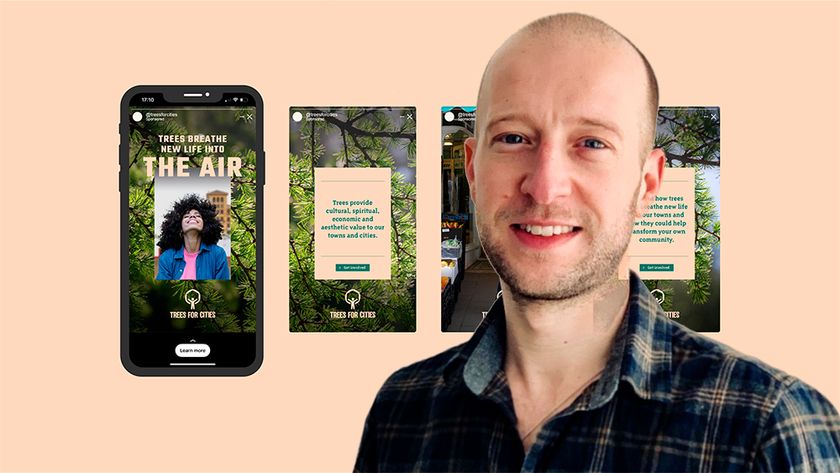5 essential rules of self-promotion
Adrian Shaughnessy offers advice on how to make an indelible mark on the design industry.

Self-promotion is one of the trickiest and most elusive skills a designer must acquire. Like learning to ride a bicycle, you have to do it to find out how it's done. It's also something that can't be avoided. As soon as designers emerge from education, they have to be able to promote themselves to prospective employers.
Later, as they enter the freelance world or the world of studio ownership, they have to be able to promote their services to prospective clients. None of this is easy, and for many designers, it's as painful as falling off a bicycle.
It's hardly surprising that self-promotion is problematical. Design schools don't teach it, and few established designers talk about it in public. To make matters worse, we're surrounded by thousands of other designers all frantically self-promoting.
For many of us, promoting ourselves feels like shouting into a wind tunnel. The whole process of self-promotion is made even more difficult by the realisation that clients mostly choose designers based on reputation and word of mouth. Yet there's no need for pessimism.
Done properly, it's possible to self-promote in ways that get results. Most of the rules of self-promotion apply equally to finding employment and to finding clients. But in truth, there is really only one rule of self-promotion: if your work is good, you can ignore all the rules; good work is the best and only reliable form of self-promotion. While you are working on that, here are five rules for self-promotion...
01. It's not all about the work
The best self-promotion is often not about your work, it's about the other stuff you do. Back when I ran my studio, we mostly designed record covers. After doing this for a few years, we published a book on contemporary record cover art. It featured some of our own work, but it mostly contained the work of other designers.
It wasn't done as self-promotion, it was done from a love of the subject, but the result was recognition on a scale we hadn't experienced when we merely shouted about our work.
Now, not everyone can publish a book on their chosen subject (although you might be surprised how easy it is to get published if you've got a good idea), but everyone can find ways of adding to the body of knowledge that surrounds their discipline.
As well as telling the world that you've just finished a new brand identity, write a blog post about an issue that interests you (see tips on how to start a blog here). Offer to write for the design press. Start debates. Promote design, not yourself.
02. Face-to-face is best
With the internet, and social media in particular, it's possible to 'speak' to almost anyone. Fancy working for that cool fashion label? Simple, send them a message on Facebook or Twitter. But unless you have something earth-shattering to show them, you will most likely be ignored.
The aim of all self-promotion should be to get face-to-face meetings. If you make meeting people the main focus of your self-promotional activities, the results will be far superior to impersonal online communication. In other words, don't ask for work, ask for a meeting.
03. Don't design for other designers
Most self-promotion looks and reads like everyone else's self-promotion. You only have to look at the majority of designer's websites.
Firstly, many of them 'sound' and look depressingly familiar: the same stock phrases and the same neat piles of business cards and letterheads. But more worryingly, they look as if they are aimed at other designers.
It seems we worry more about what other designers think about our work, rather than what clients might actually want. Run a health check on your website. Is it something a client might respond to, or is it aimed at friends and peers?
04. Clients prefer results to artefacts
It's depressing but nonetheless true that most clients care more about the impact of a piece of work has than the finely crafted details of typography, layout and production.
This is not an argument in favour of abandoning high standards of thinking and execution; rather it is a reminder that outcomes, impact and results are what clients really care about. Make sure when you show work, you also describe its impact.
05. A good reputation speaks volumes
The cultivation of a good reputation is the most important aspect of self-promotion. The winning lottery ticket in self-promotion is when clients, or employers, call you.
Trish Finegan, managing director of leading design studio Spin, has a theory that a client has to see – and be impressed by – three pieces of work before they will consider you.
What this means is that unless your work is seen in the right places and talked about in the right places, you are not going to get that 'can-I-come-and-talk-to-you' call.
So growing a reputation is vital. This means talking to journalists; speaking at conferences; getting your work on blogs; and using all of the dozens of other channels that are open to modern designers.
Read more:

Thank you for reading 5 articles this month* Join now for unlimited access
Enjoy your first month for just £1 / $1 / €1
*Read 5 free articles per month without a subscription

Join now for unlimited access
Try first month for just £1 / $1 / €1
Get the Creative Bloq Newsletter
Daily design news, reviews, how-tos and more, as picked by the editors.
The Creative Bloq team is made up of a group of design fans, and has changed and evolved since Creative Bloq began back in 2012. The current website team consists of eight full-time members of staff: Editor Georgia Coggan, Deputy Editor Rosie Hilder, Ecommerce Editor Beren Neale, Senior News Editor Daniel Piper, Editor, Digital Art and 3D Ian Dean, Tech Reviews Editor Erlingur Einarsson and Ecommerce Writer Beth Nicholls and Staff Writer Natalie Fear, as well as a roster of freelancers from around the world. The 3D World and ImagineFX magazine teams also pitch in, ensuring that content from 3D World and ImagineFX is represented on Creative Bloq.












